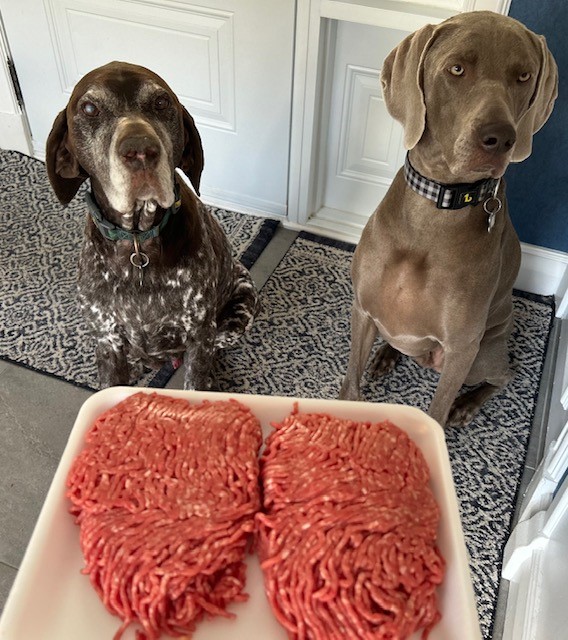
The subject of feeding a raw diet to your dog or cat seems to be a sensitive one, and sometimes very emotional. Some pet owners will take a firm and often extreme position in favour of raw pet food, which is heavily promoted on social media and in pet stores where these products are touted as miracle cures and solutions to every health problem in pets.
This article aims to provide our version of the facts from our position as veterinary doctors, thereby informing our customers of the scientifically available information on the subject allowing owners to make a more informed decision about pet nutrition.
Surprisingly, despite everything we know about the risks of eating undercooked hamburger or contaminating our kitchen counters with raw chicken, few pet owners in favour of raw diets worry about the risks of contamination of their dog, cat, or family.
Can a raw diet put your pet’s life at risk? The answer is absolutely, yes, without a doubt. The risk can also extend to you and your children as well.
The danger becomes much more real when it involves one of our patients.
Recent anecdote:
The dog in question, who was previously in excellent health, very nearly succumbed to an infection caused by the Salmonella bacteria, confirmed in our laboratory. The only possible source was the raw diet he was consuming. Luckily, neither the owners nor members of our team developed symptoms of salmonellosis, but the number of reports and articles describing outbreaks continues to increase, as contamination is very easy.
Here is a partial list of dangerous pathogens regularly detected in raw, frozen, or freeze-dried diets:
- Salmonella
- E.Coli
- Clostridium difficile (C.Diff)
- Listeria
- Staphylococcus Aureus
- Campylobacter
- Toxoplasma
Additionally, high pressure pasteurization does not completely eliminate these pathogens.
So, what are the benefits proclaimed by manufacturers and followers of raw diets?
- Easily digestible: no scientific proof, no evidence whatsoever that a raw diet is more digestible than a good quality cooked diet, not discounting specific exceptions.
- Healthy skin and coat: no evidence.
- Stool odour reduction : difficult to prove, and no clear evidence.
- Less stools produced : just like a good quality, highly digestible commercial diet, but is this really important?
- Immune system support : absolutely no scientific evidence for this claim
- Increases energy : compared to what?
- Cleans teeth naturally : dental diets have proven themselves to be highly effective for this purpose.
In addition, few owners who offer uncooked products such as fresh, frozen, or freeze-dried raw food, pork ears, and/or dried beef, employ the necessary preventive hygiene measures required to avoid contamination.
Preventive Hygiene Measure with Raw Diets
- Disinfect all surfaces potentially contaminated by raw food (utensils, cutting boards, refrigerators, microwaves).
- Never wash food or water bowls of pets eating raw diets with other kitchen crockery or utensils, and thoroughly disinfect the sink after washing.
- Do not allow pets who eat a raw diet to lick your hands or face.
- Wash your hands for at least 20 seconds after contact with raw food, surfaces that may be contaminated, cutlery, bowls, or the mouth of your pet.
The real question becomes, are the questionable benefits of raw diets worth the risk?
The following links offer even more scientific information on the subject of raw diets. Happy reading!
- https://www.ncbi.nlm.nih.gov/pmc/articles/PMC6849757/
- https://www.wormsandgermsblog.com/tags/raw-meat/
- https://vetnutrition.tufts.edu/?s=Raw
- https://www.fda.gov/animal-veterinary/animal-health-literacy/get-facts-raw-pet-food-diets-can-be-dangerous-you-and-your-pet#:~:text=Thoroughly%20wash%20your%20hands%20with,inside%20of%20refrigerators%20and%20microwaves.
